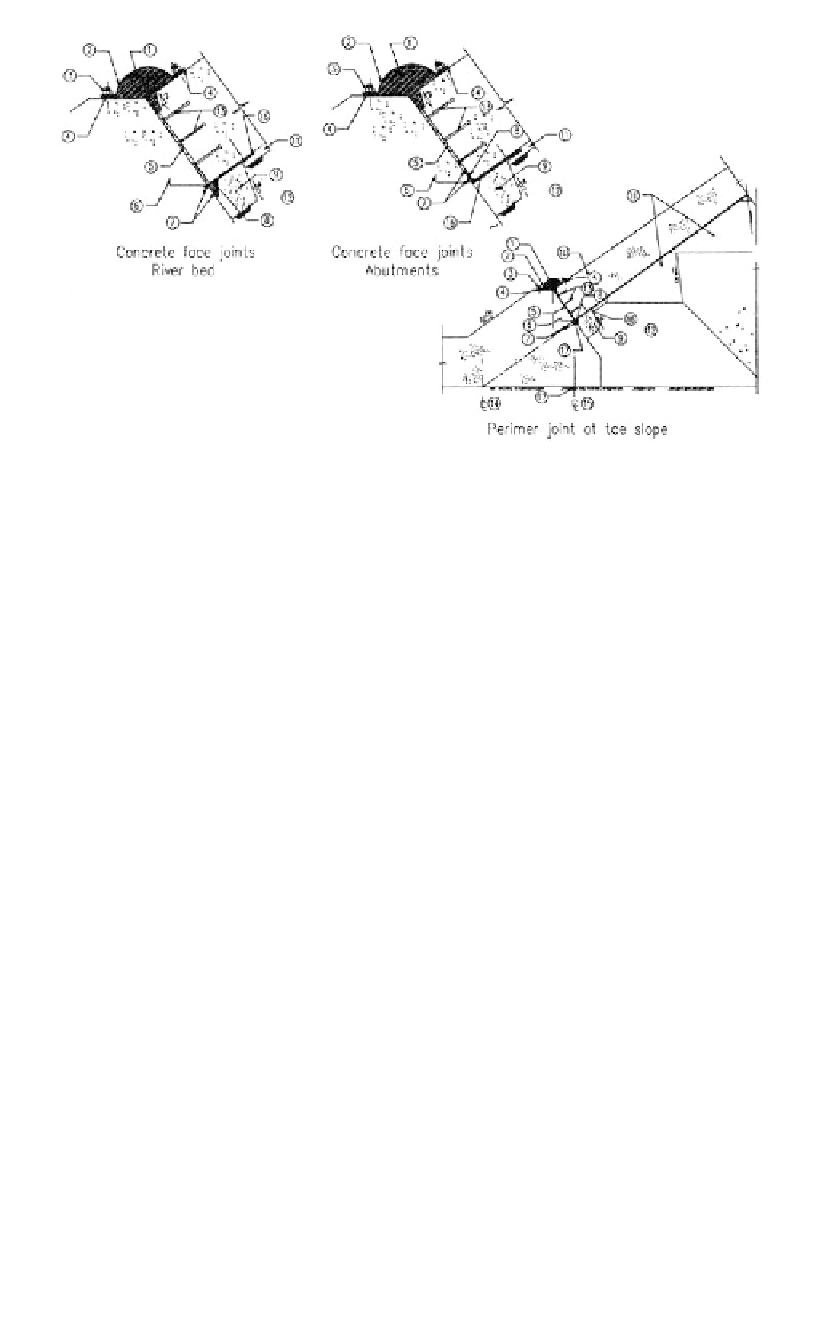Environmental Engineering Reference
In-Depth Information
Figure 15.20.
Antamina Dam joint details (Amaya and Marulanda, 2000). (1) Fly-ash, (2) PVC band,
(3) Anchor bolts, (4) Epoxy glue, (5) Abarco wood, (6) Copper seal, (7) Circular neoprene, (8)
Styrofoam, (9) Sand/asphalt mix, (10) Slab, (11) concrete curb, (12) Zone 2A, (13) Steel bolts,
(14) Plinth excavation reference line, (15) Plinth construction reference line, (16) PVC strip.
As mentioned above, in the design of Antamina dam (Amaya and Marulanda, 2000)
the central PVC seal was eliminated.
Mastic filler water stop.
The concept of the mastic filler is that, as the perimetric joint
opens, it will be forced into the opening by the water pressure. The mastic is covered with
a PVC or hypalon membrane held in place by steel angles anchored to the concrete.
ICOLD (1989a) indicate that a chicken wire mesh was embedded in the mastic to pre-
vent its flow downwards along the inclined joints. The covering membrane is convex
upward to provide for enough mastic volume. It is important that the membrane be sealed
effectively so that the water pressure does not leak past the membrane, relieving the dif-
ferential pressure needed to force the mastic into the crack. Adhesion is improved by
painting the joints with mastic.
Cooke and Sherard (1987) indicate a preference for the membrane to be hypalon, not
PVC (at least for higher dams), because of its proven 10 to 20 year life exposed to the
weather. After this period the cover is not critical, because joint opening should have
ceased, and the mastic is wedged tightly into the joint, stopped against the other water
stops or, if they have ruptured, against the mortar or asphalt impregnated sand pad.
The mastic which has been used is IGAS which is a bitumen compound. It retains its
flow characteristics provided it is not exposed to sunlight for extended periods. This did
occur in Golillas Dam (Amaya and Marulanda, 1985) where the PVC and IGAS were
exposed for about four years before the reservoir was filled.
Some recent dams have replaced the mastic with ash or sand, which is to fill the joint
opening, and be retained by the other water-stops or, in the event they fail, by the Zone
2A filter beneath.
Figure 15.15
and
Figure 15.16
show such details.
15.3.4
Crest detail
It is common to provide a reinforced concrete retaining wall (“wave-wall”, “crest wall” or
“parapet wall”) at the crest of the dam to reduce the volume of rockfill. Wave walls up to
3m to 5 m have been used.

